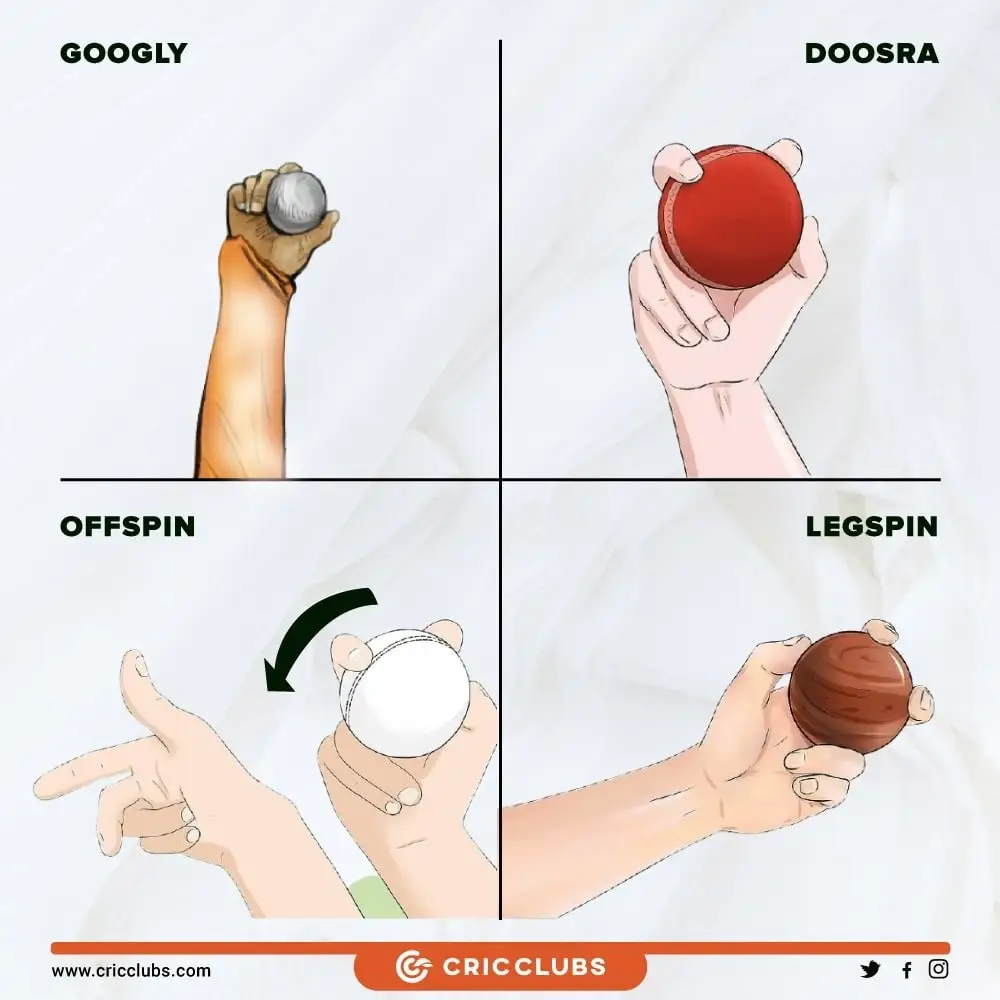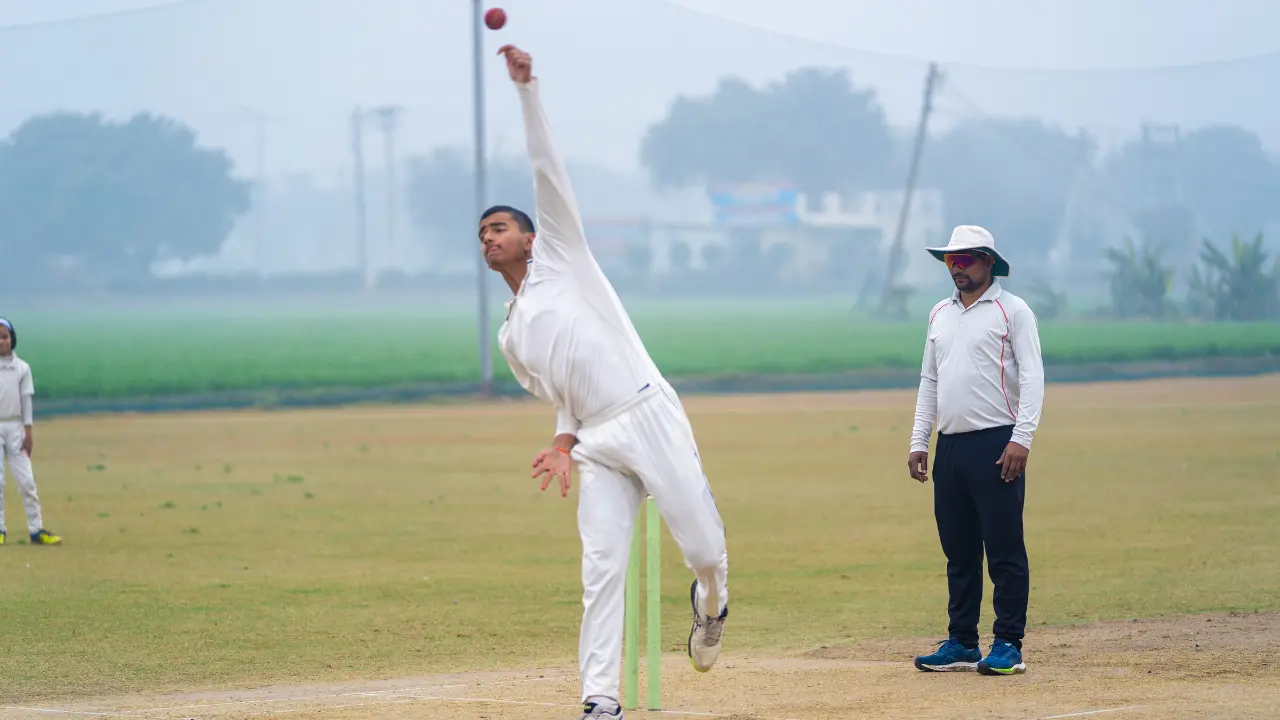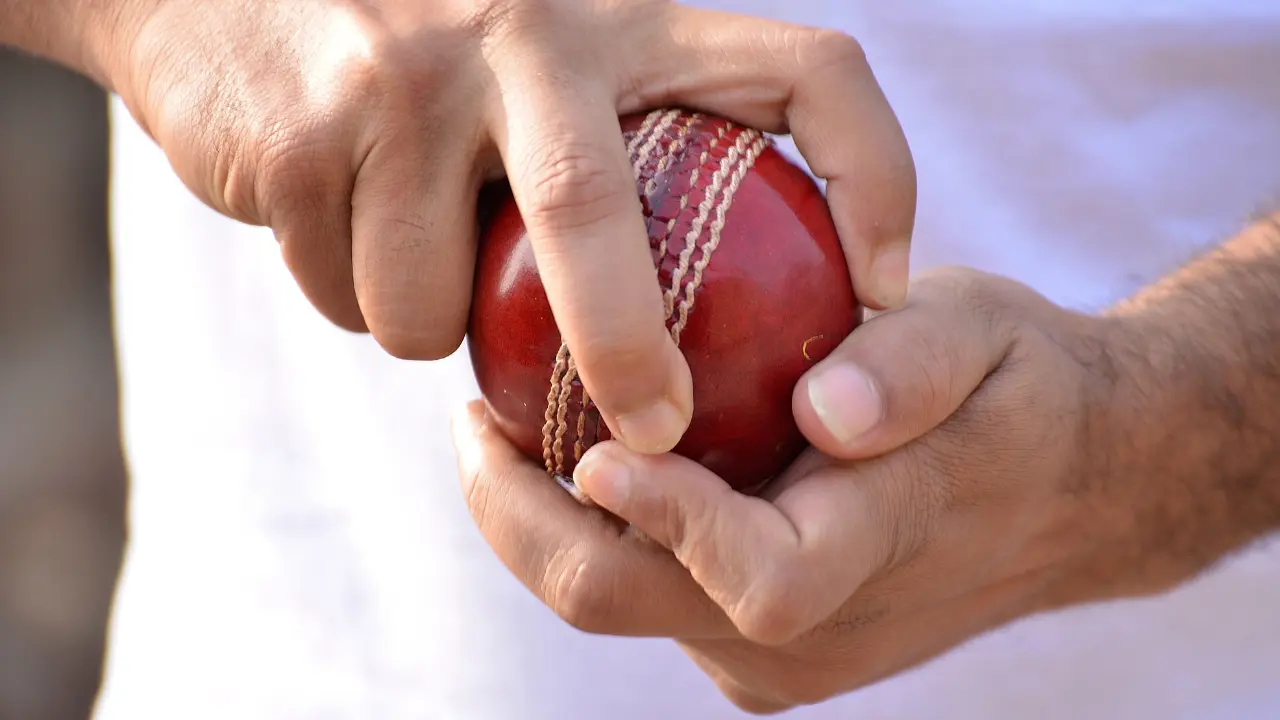Why is Spin Bowling Effective?
- Deception: Spin bowlers create variations in speed and turn, making it difficult for batsmen to predict the ball's trajectory.
- Turn: The ability to turn the ball sharply can lead to dismissals by inducing mistakes from batsmen or making it hard to play defensively.
- Flight and Bounce: By changing the ball's flight, spinners can lure batsmen into false shots. The varying bounce can catch them off guard.
- Wear and Tear on the Pitch: Spinners often thrive on worn pitches, where cracks develop, allowing the ball to turn unpredictably.
Types of Spin Bowling and Techniques

- Off Spin:
- Grip: Hold the ball with the index and middle fingers across the seam and the thumb resting lightly on the seam.
- Bowling Technique: Rotate your wrist outward to create spin, and follow through with your arm over the shoulder.
- Key to Turn: The wrist position at the point of release affects how much turn you get on the ball.
- Leg Spin:
- Grip: Hold the ball with the index finger along the seam and the middle finger applying pressure, with the thumb on the seam.
- Bowling Technique: Rotate your wrist inward while releasing the ball, and focus on your follow-through to achieve the correct turn.
- Key to Turn: The wrist and finger positioning at release determine the turn and bounce.
Read the article: What Made Test Cricket So Significant?
- Googly:
- Grip: Similar to leg spin, but the wrist position is crucial to disguise the delivery.
- Bowling Technique: Use the same delivery action as a leg spin but rotate your wrist in the opposite direction.
- Key to Turn: Deception is key; the batsman expects leg spin but faces off spin instead.
- Top Spin:
- Grip: Hold the ball with fingers spread apart, similar to off-spin, but emphasize pressure on the index finger.
- Bowling Technique: Release the ball with a strong downward motion to generate topspin.
- Key to Turn: Top spin causes the ball to dip quickly, making it challenging for batsmen to play.
- Slider:
- Grip: Use a standard leg spin grip but release the ball with less wrist rotation.
- Bowling Technique: The delivery should be flat and quick, often sneaking through the batsman’s defense.
- Key to Turn: The lack of spin creates a straight trajectory, catching batsmen off guard.
Impact of Grip on Turn
The grip on the cricket ball is crucial for achieving the desired spin. Here’s how grip influences spin:

- Finger Pressure: More pressure on the fingers during release enhances spin and turn.
- Wrist Position: The wrist’s angle at the moment of release significantly affects the ball's rotation and trajectory.
- Seam Position: Maintaining the seam's position during delivery ensures that the ball grips the pitch effectively, enhancing turn
Spinners with the Highest Wickets in Tests
| Player | Country | Wickets | Match Format |
|---|---|---|---|
| Muttiah Muralitharan | Sri Lanka | 800 | Test |
| Shane Warne | Australia | 708 | Test |
| Anil Kumble | India | 619 | Test |
| Nathan Lyon | Australia | 530* | Test |
| Ravichandran Ashwin | India | 522* | Test |
Spin bowling is an art that requires skill, practice, and a deep understanding of the game. By mastering different spin techniques and grips, bowlers can enhance their effectiveness on the field. The great spinners of the game have demonstrated the power of spin, showing that with the right technique, any match can turn in their favor. Whether you're a budding cricketer or a fan, understanding spin bowling adds a new dimension to your appreciation of cricket.

